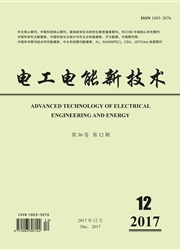

 中文摘要:
中文摘要:
明确决定高温超导直流电缆最大制冷距离的因素是进行电缆系统参数配置的基础问题。本文建立了顺流制冷方式下制冷系统的热力学-流体力学物理模型,用解析的方法研究了在电缆及其制冷系统稳态情况下的外部热损耗、流量等因素单个作用时分别对电缆最大制冷长度的影响。结果表明外部热损耗和制冷距离呈负相关关系;仅在一定范围内制冷距离随流量增大而延长;内外流换热效果对制冷距离影响不大;在一定流量下增大壁面粗糙度会减小制冷距离且流量越大粗糙度的增加对制冷长度的减小效果越明显;一定范围内增大内杜瓦管半径能延长制冷距离。本文对结果产生的原因做了解释并指出了结论对工程实践的意义,本文的分析方法和结论对于长距离应用的高温超导直流电缆系统配置有参考价值。
 英文摘要:
英文摘要:
It is a groundwork of configuration of high temperature superconducting (HTS) direct current (DC) ca- ble system to make clear what factors and how they influence the maximum cooling length ( MCL). The paper built a parallel-flow hydro-thermodynamic model of the cable cooling system and based on it analytical method was employed to investigate the relationships between MCL and external heat loss, mass flow, and other cable parameters respectively under static condition of the cable system. The results show that external heat loss and MCL has a negative correlation; mass flow rate elongates MCL only within a certain range; heat exchange between inner and outer flow has little influence on MCL; wall roughness decreases the MCL with a given flow rate; and within a certain range larger diameter of inner cryogenic pipe leads to longer MCL. The reasons behind the results were analyzed and the significance of each result on engineering practice was stated briefly. The results presented are of importance to HTS cable system configuration, particularly in long length scenario.
 同期刊论文项目
同期刊论文项目
 同项目期刊论文
同项目期刊论文
 期刊信息
期刊信息
